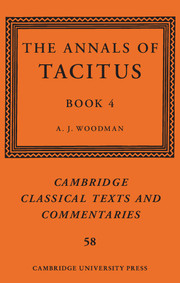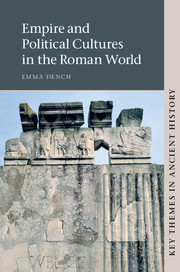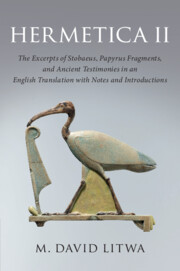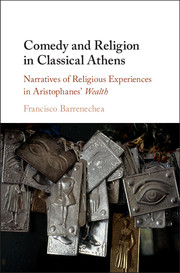Refine search
Actions for selected content:
23990 results in Ancient history
Chapter 1 - Numinous Wealth
-
- Book:
- Comedy and Religion in Classical Athens
- Published online:
- 16 July 2018
- Print publication:
- 02 August 2018, pp 11-42
-
- Chapter
- Export citation
Chapter 3 - A Healing Story
-
- Book:
- Comedy and Religion in Classical Athens
- Published online:
- 16 July 2018
- Print publication:
- 02 August 2018, pp 69-106
-
- Chapter
- Export citation
Chapter 5 - A New God Arrives
-
- Book:
- Comedy and Religion in Classical Athens
- Published online:
- 16 July 2018
- Print publication:
- 02 August 2018, pp 137-161
-
- Chapter
- Export citation
Contents
-
- Book:
- Comedy and Religion in Classical Athens
- Published online:
- 16 July 2018
- Print publication:
- 02 August 2018, pp v-v
-
- Chapter
- Export citation
Abbreviations
-
- Book:
- Comedy and Religion in Classical Athens
- Published online:
- 16 July 2018
- Print publication:
- 02 August 2018, pp xi-xii
-
- Chapter
- Export citation
Copyright page
-
- Book:
- Comedy and Religion in Classical Athens
- Published online:
- 16 July 2018
- Print publication:
- 02 August 2018, pp iv-iv
-
- Chapter
- Export citation
Conclusion
-
- Book:
- Comedy and Religion in Classical Athens
- Published online:
- 16 July 2018
- Print publication:
- 02 August 2018, pp 162-180
-
- Chapter
- Export citation
Notes on Translation
-
- Book:
- Comedy and Religion in Classical Athens
- Published online:
- 16 July 2018
- Print publication:
- 02 August 2018, pp x-x
-
- Chapter
- Export citation

The Annals of Tacitus: Book 4
-
- Published online:
- 31 July 2018
- Print publication:
- 24 May 2018

Empire and Political Cultures in the Roman World
-
- Published online:
- 27 July 2018
- Print publication:
- 09 August 2018

The Perpetual Immigrant and the Limits of Athenian Democracy
-
- Published online:
- 27 July 2018
- Print publication:
- 16 August 2018

Hermetica II
- The Excerpts of Stobaeus, Papyrus Fragments, and Ancient Testimonies in an English Translation with Notes and Introduction
-
- Published online:
- 26 July 2018
- Print publication:
- 21 June 2018

Comedy and Religion in Classical Athens
- Narratives of Religious Experiences in Aristophanes' Wealth
-
- Published online:
- 16 July 2018
- Print publication:
- 02 August 2018
1 - Introduction
-
- Book:
- Plutarch and the Persica
- Published by:
- Edinburgh University Press
- Published online:
- 11 November 2020
- Print publication:
- 16 July 2018, pp 1-33
-
- Chapter
- Export citation
3 - Ctesias (b)
-
- Book:
- Plutarch and the Persica
- Published by:
- Edinburgh University Press
- Published online:
- 11 November 2020
- Print publication:
- 16 July 2018, pp 73-133
-
- Chapter
- Export citation
List of Abbreviations
-
- Book:
- Plutarch and the Persica
- Published by:
- Edinburgh University Press
- Published online:
- 11 November 2020
- Print publication:
- 16 July 2018, pp ix-xviii
-
- Chapter
- Export citation
Series Editor’s Preface
-
-
- Book:
- Plutarch and the Persica
- Published by:
- Edinburgh University Press
- Published online:
- 11 November 2020
- Print publication:
- 16 July 2018, pp vii-viii
-
- Chapter
- Export citation
Index
-
- Book:
- Plutarch and the Persica
- Published by:
- Edinburgh University Press
- Published online:
- 11 November 2020
- Print publication:
- 16 July 2018, pp 320-332
-
- Chapter
- Export citation
Preface
-
- Book:
- Plutarch and the Persica
- Published by:
- Edinburgh University Press
- Published online:
- 11 November 2020
- Print publication:
- 16 July 2018, pp vi-vi
-
- Chapter
- Export citation
7 - Conclusions
-
- Book:
- Plutarch and the Persica
- Published by:
- Edinburgh University Press
- Published online:
- 11 November 2020
- Print publication:
- 16 July 2018, pp 254-262
-
- Chapter
- Export citation
